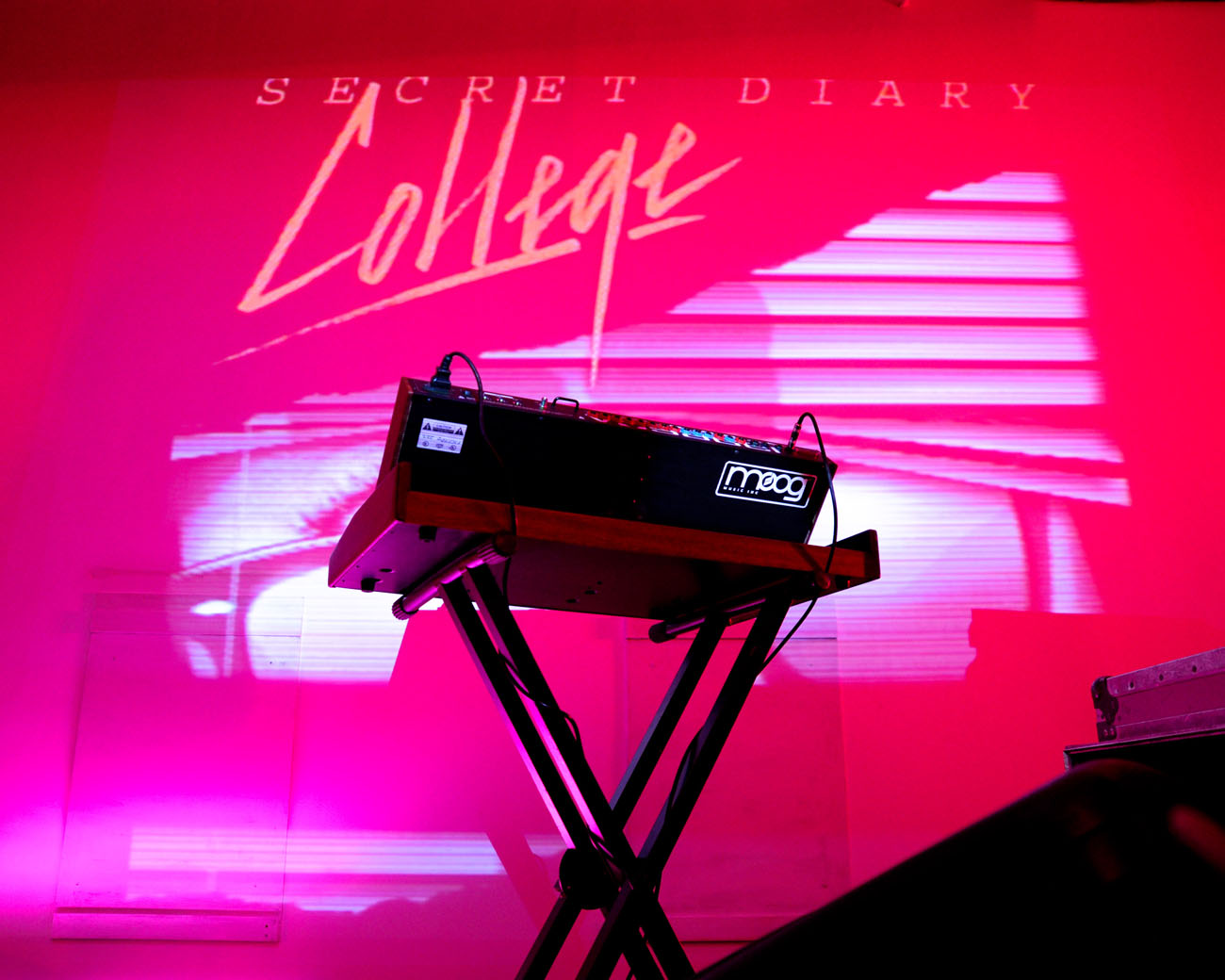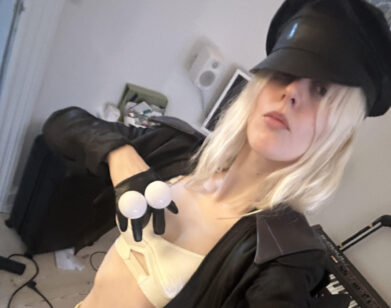College and Electric Youth Are Real Human Beings

DAVID GRELLIER, BRONWYN GRIFFIN, AND AUSTIN GARRICK.
PHOTO COURTESY OF BILLY FARRELL AGENCY
On the heels of the first live performance of the hit electro-pop anthem “Real Hero” from the Drive soundtrack, we descended to the basement of Scott Morrison’s 3×1 bespoke denim atelier to talk with the minds behind the music: French electronic composer David Grellier, alias College, and Austin Garrick and Bronwyn Griffin of Electric Youth. They had just finished their set, performed for hundreds of downtown night-seekers, in the shop above, and were now relaxing in what appeared to be an abandoned semi-circle diner booth. It was an appropriate setting for our meeting: all three musicians use synth and seethe to bring the “discarded” tid-bits of ’70s and ’80s pop-nostalgia fully into the modern moment. There are few genres more of the now than electro-pop, and the bands’ collaboration “Real Hero”—which has, since being featured in the film, assumed cultic allure—is proof of the possibilities and promise of that genre: its ability not only to communicate with, but also to represent the era from which it has re-emerged.
UZOAMAKA MADUKA: How did you get involved with Drive?
AUSTIN GARRICK: We were approached.
DAVID GRELLIER: We don’t know how they found out [about the song].
MADUKA: Really?
GARRICK: To this day, not sure.
GRELLIER: It’s a mystery, because we sold only 300 copies…
GARRICK: Of the original release…Which, it was two years ago that we first released it. There were pockets where there was a bit of a cult following. But it was a small, underground kind of thing. So it was amazing that they found it and that they stuck with it.
MADUKA: Where were these pockets?
GRELLIER: Since the beginning, I think the main audiences were in the USA and in France, and [it makes sense because] our references and interests go that route—we are quite fascinated by American pop cultures from the seventies and eighties…
GARRICK: And film culture.
MADUKA: That’s evident in your graphic design and aesthetic. Was it strange to have a delayed reaction to your work?
GARRICK: It happened naturally. We never laid the music for it in the first place with the intention of “Yeah, let’s make this the big Top 10 song.” It’s like, “We have this idea, it feels right, let’s make it.” It comes from a pure [place]. It was what it was. It just so happens that at the time that it did [take off], two years later, it was understood by the filmmakers. And they took it and did something with it that was just… really, it becomes so right. The film is the embodiment of what we tried to capture.
MADUKA: What was it like to see it all come together in Drive?
BRONWYN GRIFFIN: It was surreal.
GARRICK: [nods] There had been some promo clips for the movie, and we had seen those, and even then we started to realize how much this movie [captured] the feelings and sensations that we tried to [capture] in our music. They were really sensitive to that, independent of us.
GRELLIER: The director found a way [to speak] with this simple story, because the plot was very sharp. He created a great piece of art, I think. A great piece of cinema, of music, and of acting. When I saw it the first time, I cried.
MADUKA: Really?
GRELLIER: Yeah, really. Because the story is simple and beautiful. And also the music was nice. [Griffin laughs]. And it fits so well with what they want to say.
MADUKA: Have you always been great fans of film in general?
GARRICK: Oh yeah, it plays such a big part in the music we make.
GRELLIER: I try to watch one movie every day.
MADUKA: I love that.
GARRICK: For us…
GRIFFIN: …[it’s] whenever we get a moment.
GARRICK: When we record, we always have a film playing. We’ve never finished a song without having a film that’s there and a part of it. Never. It plays a big part. I’m as much a lover of film as I am of music.
GRELLIER: It has worked between us, I think, because we have the same feelings about [these sort of] things. [About] humanity… [about] the duty of a life, and of a story…
MADUKA: It makes sense, then, that you came together. How did this collaboration start?
GARRICK: We met online.
MADUKA: Match.com?
GARRICK: [laughs] No, not that kind of meeting! Although, well, [Bronwyn] and I, we’ve been dating since we were twelve years old.
MADUKA: Really! Where did you meet?
GARRICK: Dalewood Middle School in Hamilton, Ontario, Canada.
GRIFFIN: [referring to Grellier] And he’s a married man.
MADUKA: How long have you been married?
GRELLIER: Since this summer.
GARRICK: She’s very lovely, and a big part of all of our lives.
MADUKA: Impressive—so, there’s a lot of love here. It goes into your music, of course…
GARRICK: There are certain things we see eye-to-eye on that we don’t really find very often… [it’s hard to find] people with those same thoughts.
GRELLIER: It’s very rare. Maybe in my career I’ve met four musicians like that. It can change all your music, your style. We’ve worked together five years now—we don’t do a lot of [collaborations], but when we do, we do them just the way we want to do them.
MADUKA: So what do you see as the future for you all?
GARRICK: We will definitely be working on more [songs]. The thing is, our collaborations are never forced. When we have the right song, we do it.
GRELLIER: It has to occur naturally. But yes, we’ll definitely work together [again].
GARRICK: But we each have our individual thing. We just put out an EP [Right Back To You] and David [College] has an album out this year, Northern Council.
GET THAT COLLEGE ALBUM. GET THAT ELECTRIC YOUTH EP. GET THAT COLLEGE + ELECTRIC YOUTH PARTY.






